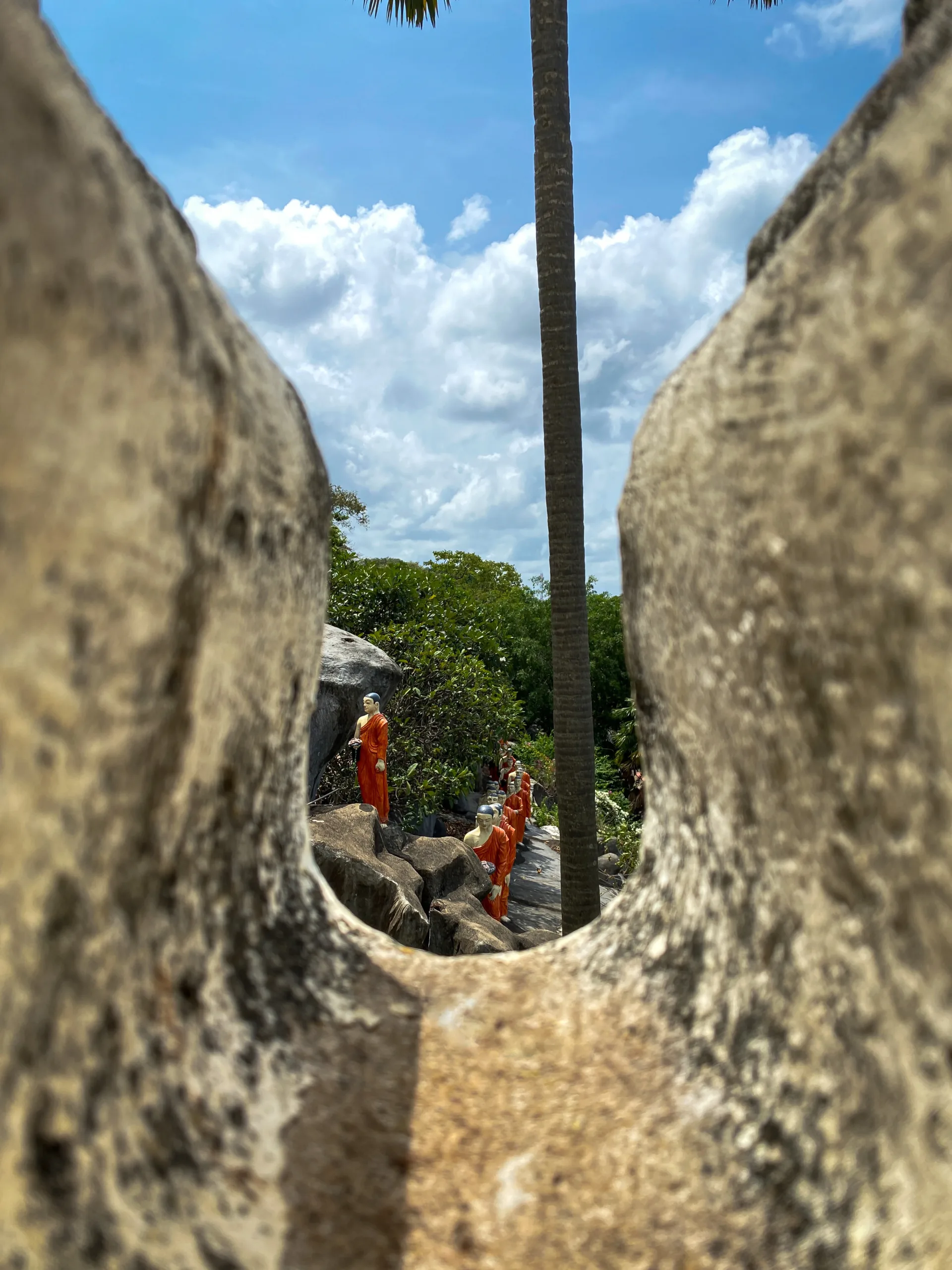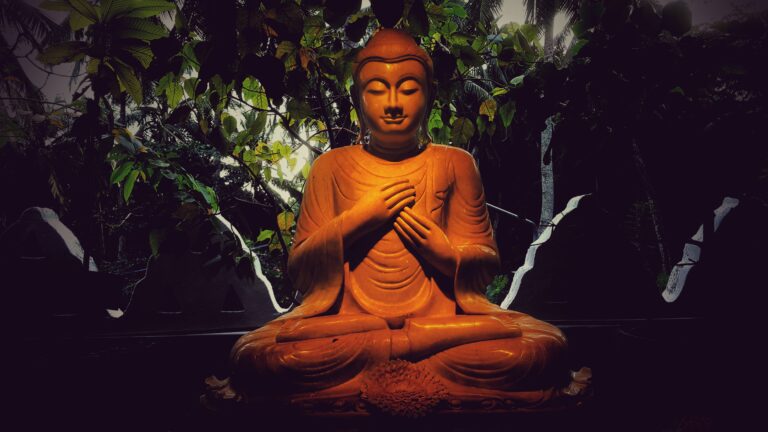Traveling to Southeast Asia means that your journey will no doubt intertwine with Theravada Buddhism. This vibrant part of the world boasts of an abundance of natural beauty and diverse cultures like no other, easily making it paradise for anyone who steps foot in the region.
If you’re looking for ways to truly immerse yourself in Southeast Asian culture, then exploring Theravada Buddhism should no doubt help you understand the customs and beliefs of the people you meet. It’ll also help you appreciate their unique way of life while enhancing your overall travel experience as you walk through temples steeped with stories worth a thousand years.
Theravada Buddhism is primarily practiced in Cambodia, Laos, Myanmar, Thailand, and Sri Lanka (South Asia). While Mahayana Buddhism is practiced in East Asian countries such as Japan, Singapore, South Korea, China, Hong Kong and Vietnam.
Table of Contents
ToggleWhat is Theravada Buddhism?
Theravada Buddhism is one of the oldest and most well-known Buddhist traditions in the world, with a history dating back over 2,500 years. Its roots can be traced back to the teachings of Siddhartha Gautama, also known as the Shakyamuni Buddha or simply the Buddha (for the sake of this article), who lived and taught in India during the 5th century BCE.
The teachings were later transmitted to Sri Lanka and other parts of Southeast Asia, where it became the dominant form of Buddhism.
Theravada Buddhism emphasizes the importance of personal enlightenment through self-discipline and meditation, as well as the study of Buddhist scriptures.
Throughout its history, Theravada Buddhism has faced many challenges and undergone drastic changes, such as the rise of Islam which brought about the destruction of many Buddhist monasteries and the colonization of Southeast Asia by European powers where Buddhism was replaced with Christianity in many areas.
Despite everything, Theravada Buddhism has remained an enduring and significant spiritual tradition in many parts of the world.
If you’re curious to know what’s the difference between the 3 schools of Buddhism: Theravada, Mahayana and Vajrayana, you can click here!

Who is the Central Figure in Theravada Buddhism?
Siddhartha Gautama
Also known as the Buddha, he was born a prince and was even married and had a son, Rahula, before he gave it all up after seeing the four sights – an old man, a sick man, a dead man, and an monk – the Buddha was deeply moved by the suffering and impermanence of life.
He realized that worldly pleasures offered no lasting happiness. Motivated by a desire to understand the nature of suffering and the path to liberation, he renounced his privileged life and set out on a spiritual quest.
He lived in India over 2,500 years ago and achieved enlightenment after years of meditation. He began teaching others the path to freedom from suffering (Dharma).
He taught the Four Noble Truths and the Eightfold Path, which form the core principles of Buddhism. Most of the statues you will see around Southeast Asian temples are most likely depictions of him in various positions such as lotus pose, standing and reclining.
In Theravada Buddhism, the teachings of the Buddha are considered the most authoritative and essential source of wisdom.
The Buddha is revered as a teacher and as a guide. His life story is often used as an example of how to live a virtuous and enlightened life.
Understanding the life and teachings of the Buddha is a significant part of exploring Theravada Buddhism, and it can deepen one’s understanding of the religion.
If you want to know more about the life of the Buddha, I recommend watching Thus I Have Heard on Youtube, it was made in Thailand and it’s really comprehensive! Do note that it’s 4-hours long but I found it to be very educational and dare I say, enlightening!
What is the Sacred Text of Theravada Buddhism?
Pali Canon
Considered to be sacred and authoritative by its followers, the Pali Canon is the oldest and most complete collection of the teachings of the Buddha.
Written in Pali, an ancient language closely related to Sanskrit, it consists of three main sections: the Vinaya Pitaka, which contains the rules and regulations for monks and nuns; the Sutta Pitaka, which is a collection of discourses given by the Buddha and his disciples; and the Abhidhamma Pitaka, which presents a systematic analysis of Buddhist doctrine.
The Pali Canon is revered by Theravada Buddhists as the most authentic record of the Buddha’s teachings. It provides guidance for the practice of Buddhism, as well as insight into the nature of reality, the human mind, and the path to liberation from suffering.
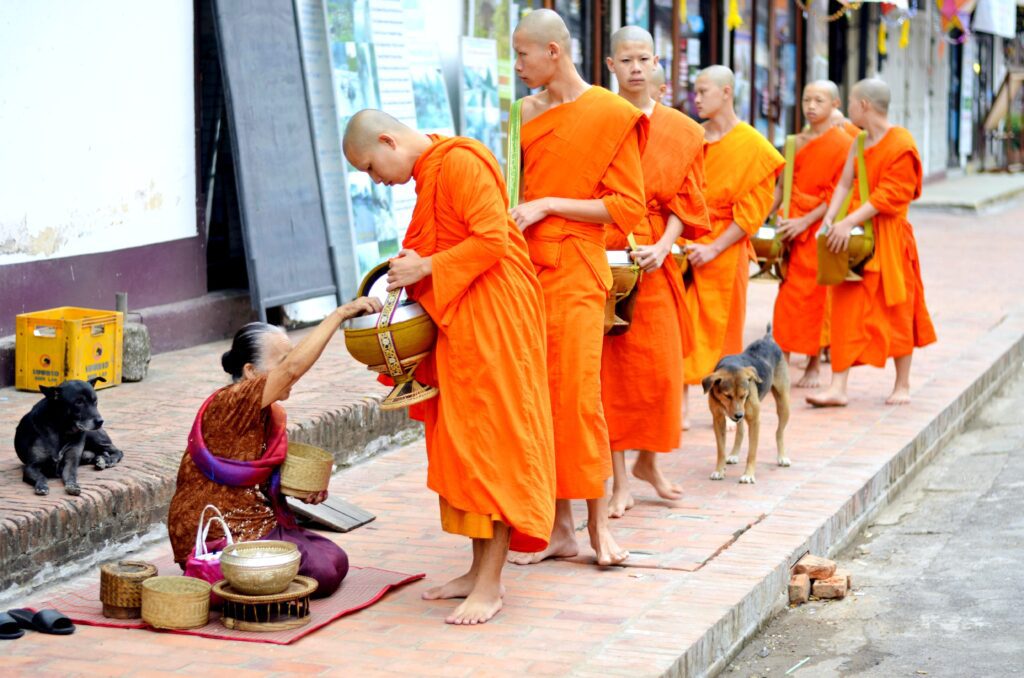
What are the Core Beliefs of Theravada Buddhism?
Samsara (The Cycle of Birth, Death and Rebirth)
Samsara is the cycle of birth, death, and rebirth in the Buddhist and Hindu belief system. It is believed that all beings are trapped in this cycle due to their actions and intentions, which accumulate karmic energy. When one dies, the accumulated karma determines their next rebirth, either in a higher or lower realm of existence, based on their actions and intentions in their previous lives.
Nirvana
The ultimate goal of Buddhism is to break free from the cycle of samsara and achieve Nirvana, a state of ultimate enlightenment. To do so, one must follow the teachings of Buddha and accumulate positive karma through good deeds, moral conduct, and meditation, which will lead to a better rebirth or liberation from samsara altogether.
The Buddha himself is seen as an exemplar of someone who has achieved Nirvana, and his teachings are believed to provide a path for others to achieve the same state. In this sense, the Buddha is seen not as a deity to be worshipped, but as a teacher and guide who can help others to achieve enlightenment.
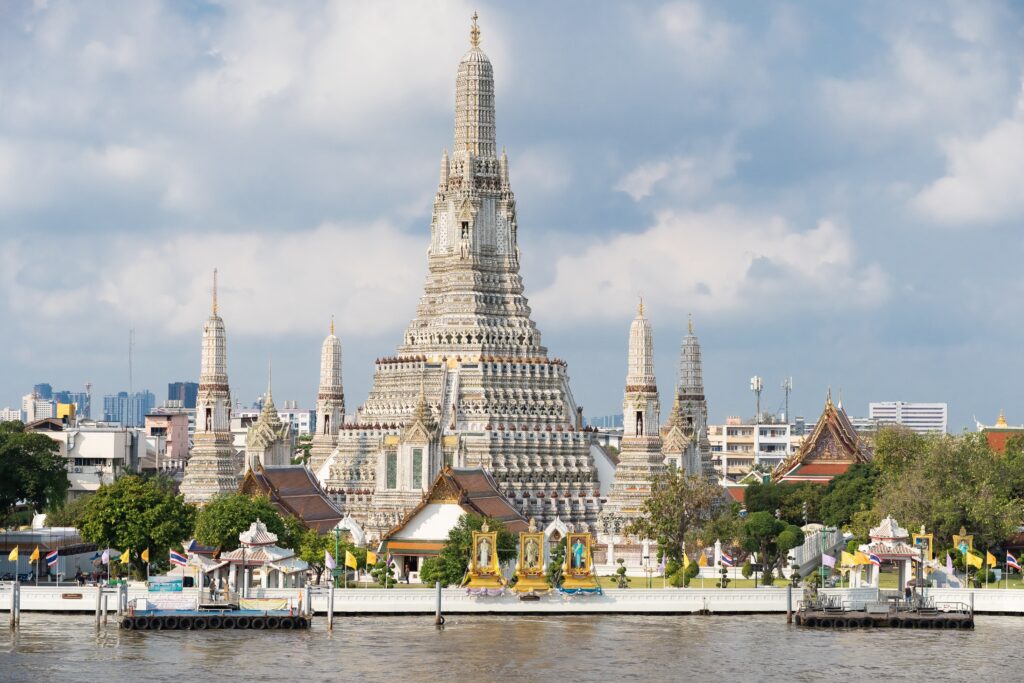
Karma
A fundamental concept present in all other Buddhist traditions as well as Hinduism (though it’s a bit different). Somehow, it’s often misunderstood but the word “karma” itself just means action, and it refers to the idea that all intentional actions have consequences.
In other words, every action that a person takes creates an imprint on their mind, which will eventually lead to results or consequences in the future, whether in this life or in a future life.
Karma is also believed to get carried over from your past lives, known as karmic debt. It is believed that this karmic debt must be paid off in order to progress towards enlightenment, and it can be done through the practice of good deeds and following the teachings of the Buddha.
Karma operates through the law of cause and effect. Positive actions, such as acts of generosity, kindness, and compassion, will create positive karmic imprints, which will lead to positive results or outcomes in the future.
Negative actions, such as acts of violence, greed, and hatred, will create negative karmic imprints, which will lead to negative results or outcomes in the future.
The concept of karma is closely linked to the idea of rebirth. The actions that a person takes in their current life will create the karmic conditions that will determine the circumstances of their next life.
Therefore, the goal of practicing Buddhism is not only to create positive karma but also to purify negative karma from past actions in order to achieve liberation from the cycle of rebirth and suffering.
That’s why you will often hear that bad people will get reborn as animals in the next life. Tibetan Buddhists believe that Samsara has been going on for eons that every being at one point has been another’s mother which is why they treat even the most insignificant insect with respect.
Four Noble Truths
The Buddha attained enlightenment after meditating for several days under a bodhi tree, where he gained insight into the nature of reality and formulated the Four Noble Truths.
- The Truth of Suffering (Dukkha) – The first noble truth is the recognition that suffering exists in life.
- The Truth of the Cause of Suffering (Samudaya) – The second noble truth is the understanding that the origin of suffering is attachment to things that are impermanent.
- The Truth of Cessation of Suffering (Nirodha) – The third noble truth is the realization that suffering can be overcome and brought to an end by letting go of attachment.
- The Path to the Cessation of Suffering (Magga) – The fourth noble truth is the path that leads to the cessation of suffering. This is called the Noble Eightfold Path, which includes the right view, right intention, right speech, right action, right livelihood, right effort, right mindfulness, and right concentration.
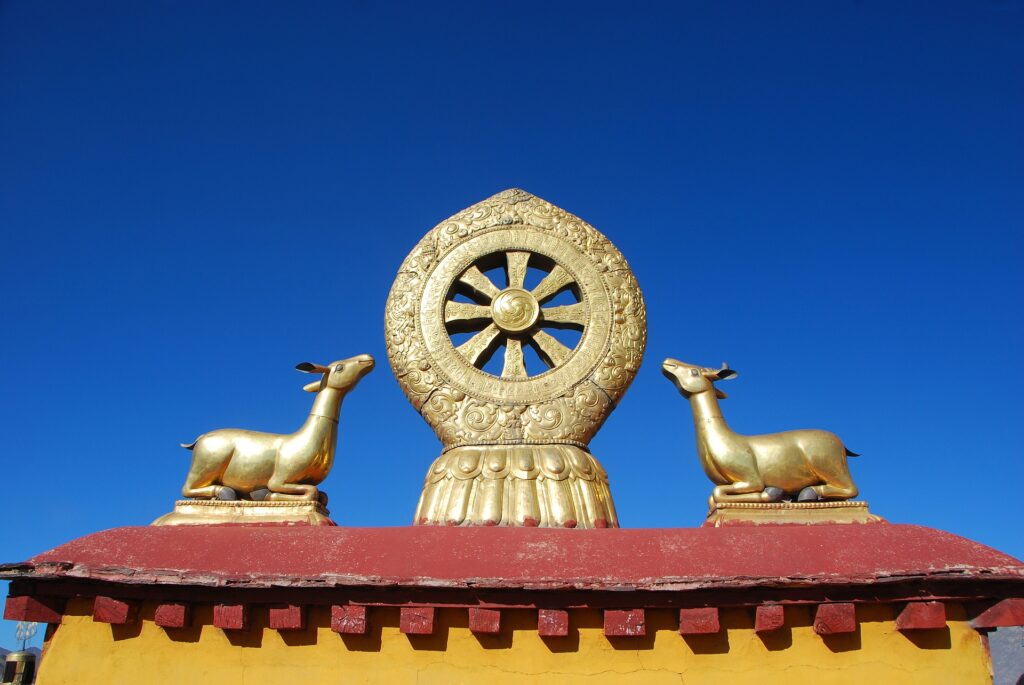
What are the Core Principles of Theravada Buddhism?
Eightfold Path
Continuing on from the path to end all suffering, the Eightfold Path is a set of guidelines that practitioners of Theravada Buddhism follow in order to achieve enlightenment and end suffering. It is divided into three categories: Wisdom (Panna), Ethical Conduct (Sila), and Mental Development (Samadhi). The dharma wheel or dharmachakra, is usually used to represent the eightfold path for illustrative purposes.
-
Right Understanding (Samma Ditthi) – This involves understanding the Four Noble Truths and the nature of reality (suffering) as it is, rather than as we wish it to be. This doesn’t necessarily mean that life is inherently hopeless, but rather that there is an inherent unsatisfaction in life that is caused by factors such as birth, aging, illness, death, separation from loved ones, and being unable to get what we want.
-
Right Intention (Samma Sankappa) – This means developing the intention good will, harmlessness and renunciation of worldly desires, including material possessions, fame, and sensual pleasures. The idea is that these attachments lead to suffering, as they are impermanent and cannot provide lasting happiness. Renunciation is not necessarily about giving up everything, instead, it is more about cultivating a mindset of detachment to worldly things. This can be practiced by observing moderation in one’s consumption of material goods, avoiding indulgence in sensory pleasures, and striving to find contentment in simpler things.
-
Right Speech (Samma Vaca) – An important aspect that encourages us to speaking truthfully, kindly, and beneficially, and avoiding lying, gossiping, and harsh speech. By cultivating the practice of right speech, we can develop greater awareness and understanding of our thoughts and emotions, as well as those of others, leading to greater compassion and wisdom.
-
Right Action (Samma Kammanta) – This refers to acting ethically and avoiding actions that harm others, such as killing, stealing, and sexual misconduct. The goal of right action is to cultivate a life that is free from negative actions and creates positive karmic consequences, leading to a fulfilling existence.
-
Right Livelihood (Samma Ajiva) – This involves making a living in a way that is honest, ethical, and does not harm others. Right livelihood encourages individuals to find work that aligns with their values and contributes to the greater good.
-
Right Effort (Samma Vayama) – In practicing right effort, one must strive to develop positive mental qualities such as loving-kindness, compassion, and mindfulness, while also striving to eliminate negative qualities such as hatred, greed, and delusion.
-
Right Mindfulness (Samma Sati) – This step involves cultivating an awareness and attention to the present moment, without judgment or attachment. By being mindful in each moment, we can avoid being caught up in unhelpful thoughts, feelings, and behaviors. This can lead to a greater sense of inner peace and clarity. We can incorporate mindfulness into our daily activities, such as eating, working and especially while traveling!
-
Right Concentration (Samma Samadhi) – This involves cultivating a focused and tranquil mind through practices such as meditation, in order to achieve deeper levels of insight and understanding. Through the practice of right concentration, we can develop a deep sense of inner calm, clarity, and insight into the nature of reality. This can help them to overcome negative thought patterns, emotions, and habits, and to cultivate positive qualities such as compassion, wisdom, and equanimity.
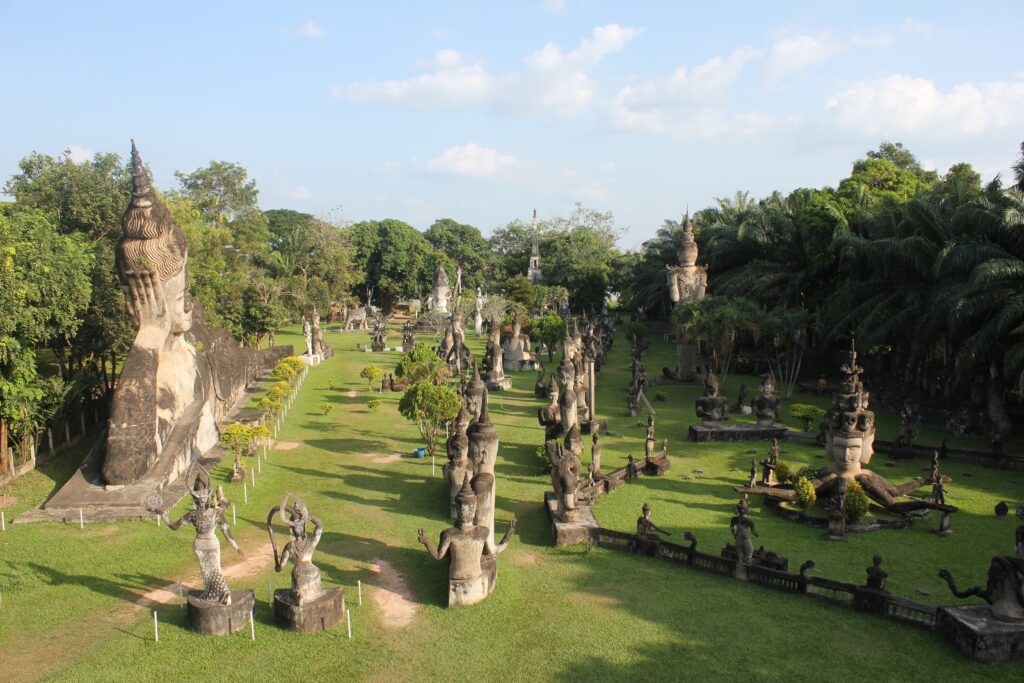
Five Precepts
I know, there are too many numbered lists already but I would like to provide a really comprehensive take on Theravada Buddhism so the next one, the Five Precepts, acts as ethical guidelines for followers to live by. They are not strict laws but entirely voluntary commitments to live a virtuous life.
Refraining from taking life – This precept entails not killing or harming any living beings, including animals.
Refraining from taking what is not given – This precept entails not stealing or taking what belongs to others without their permission.
Refraining from sexual misconduct – Avoiding sexual behavior that is harmful, exploitative or goes against the well-being of others.
Refraining from false speech – Avoiding lying, deceit or any form of dishonesty
Refraining from intoxicants – Avoiding the use of alcohol and drugs that can lead to heedlessness, harm oneself or others, and cloud the mind.
What are the Practices of Theravada Buddhism?
- Meditation: Meditation is one of the most important practices in Theravada Buddhism. It is a way to calm the mind, develop concentration, and gain insight into the nature of reality. There are many different types of meditation, but the most common is mindfulness meditation, in which one focuses on the present moment and observes the thoughts and sensations that arise.
- Chanting: Chanting involves reciting the Buddha’s teachings, mantras and other sacred texts, often in the original Pali language. Chanting is believed to purify the mind and create a positive atmosphere for spiritual practice.
- Offerings: Offerings are a way to show respect and gratitude to the Buddha and other enlightened beings. Offerings can take many forms, such as flowers, incense, or food, and are usually placed on an altar or shrine.
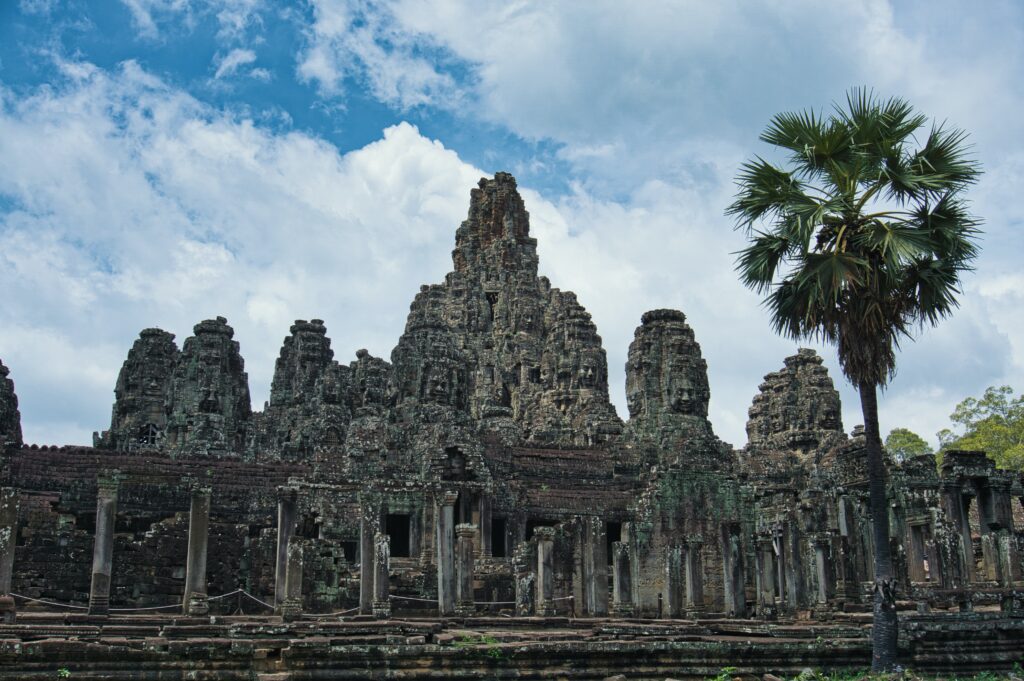
Theravada Buddhism by Country
- Cambodia: In Cambodia, Theravada Buddhism is intertwined with the ancient Khmer Empire, as many of the country’s ancient temples were originally built as Hindu shrines and then later converted into Buddhist temples. Such as Angkor Wat and Bayon Temple, which was originally built as a Hindu temple but later converted to a Buddhist temple complex.
- Laos: In Laos, the role of the monk is more focused on education, and many young boys become monks for a short period to receive an education before returning to secular life. Make sure to visit Pha That Luang, one of the most amazing temples in Vientiane or the cave temples over at Vang Vieng.
- Myanmar: Similar to Laos, the tradition where young boys become novice monks for a period of time before returning to lay life is also practiced. It’s a central aspect of national identity and culture which is made very apparent once you visit Yangon. The Shwedagon Pagoda complex is easily one of the biggest and most majestic places I have ever been to in my life, hands down. It will blow you away completely!
- Thailand: In Thailand is there is always a presence of Buddhist temples or “wats” in almost every village and city, from Bangkok to Chiang Rai (the White Temple is a must-see!) The Thai people also have a deep reverence for their monarch, who is also considered the protector of Buddhism in the country. You will most likely see their photos in a lot of establishments.
- Sri Lanka: Known as the “Land of the Buddha’s Teachings,” one unique tradition is the “pindapatha” almsgiving, where monks walk in a line with a begging bowl to receive offerings from locals.
What are the Customs of Theravada Buddhism?
It depends on the country but generally when visiting temples or other sacred sites, dress modestly and remove your shoes before entering.
Do not point your feet towards a Buddha statue or towards monks or nuns or other people in the temple. This is considered disrespectful.
Show respect for Buddha images as they are considered sacred objects. Don’t touch or climb on them, and avoid turning your back on them while sitting down inside temples.
When offering alms to monks or nuns, use your right hand and avoid making direct eye contact as a way to show humility and deference to the monks or nuns, who are considered to be more spiritually advanced.

